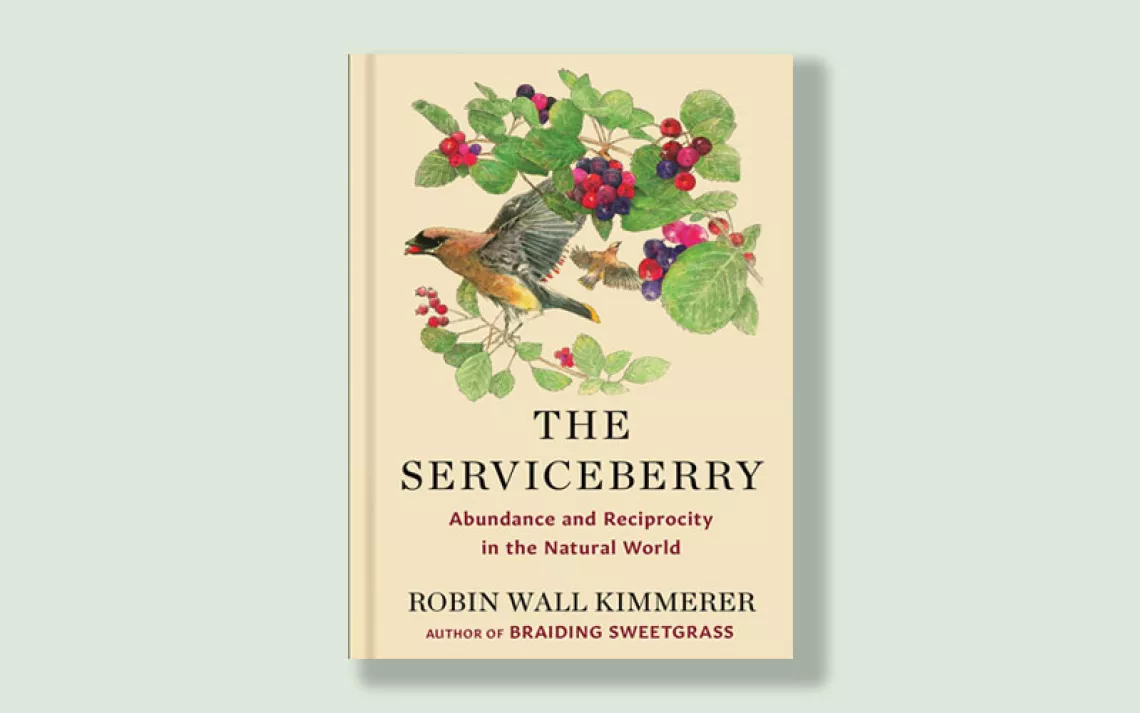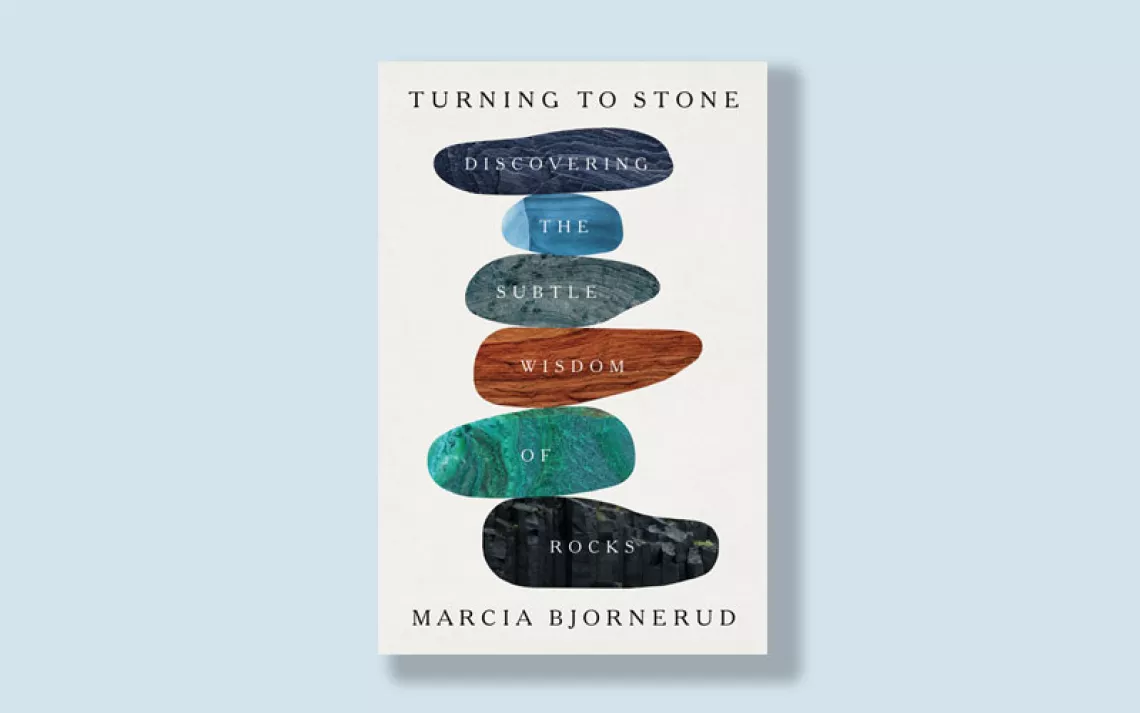4 Thought-Provoking Graphic Novels About the Environment
Comic books aren’t just for kids anymore.

Climate Changed: A Personal Journey through the Science by Philippe Squarzoni © Abrams ComicArts, 2014
Graphic novels marry art and writing for a totally immersive reading experience. But they’re not just about superheroes. They can also be thought-provoking meditations on the deepest issues of our time, including the destruction of our environment. Here are four graphic novels that will make you rethink and appreciate our place in nature.

1. Rime of the Modern Mariner, Nick Hayes
Perfect for: Poetry lovers, environmentalists tired of climate change naysayers
In Nick Hayes’ graphic novel retelling of Coleridge’s most famous poem, the mariner shoots the albatross with a gun rather than a cross-bow, and he tells his tale not to a hapless wedding guest but a cynical divorcee. Hayes draws from The Rime of the Ancient Mariner’s naturalistic ideas to illustrate (literally) the frightening 21st-century environmental issues we face, in a world he calls “detached from consequence.”
After killing the albatross, Hayes’ mariner sees all manner of horrors—a North Pacific drilling barge leaking a “glossy thick petroleum slick,” swaths of polystyrene bobbing in the heart of the North Pacific gyre, and nylon netting in the body of the albatross itself—all rendered in precise but nightmarish line art. Through a lavishly illustrated dream sequence, the mariner comes to an understanding of his place in nature, a sort of rebirth that has him feeling truly interconnected with life on earth.
Hayes stays true to the original poem’s flowing rhyme, somehow working in phrases like “polymethyl methacrylate” and “Themisto gaudichaudii” gracefully. And unlike his busy divorcee, Hayes lingers over the poetry, dedicating whole pages of painstakingly detailed art to a single elegant line. The art is expressive—streaky and ragged or simple and clean-cut in all the right places.

Sign up to receive Sierra News & Views
Get articles like this one sent directly to your inbox weekly.
With this action you affirm you want to receive Sierra Club communications and may vote on policy designated by the Sierra Club Board.

2. I’m Not a Plastic Bag, Rachel Hope Allison
Perfect for: Young children, people concerned about ocean debris
I’m Not a Plastic Bag is a wordless, whimsical flight of fancy whose environmental message is far from explicit. The graphic novel takes the infamous Great Pacific Garbage Patch not as a setting or an environmental problem but as a character in itself. Grotesque yet oddly endearing, the patch goes looking for a friend but repels everything it comes into contact with.
The book is filled with clear-eyed, unsentimental depictions of trash, reminding us that a staggering amount of our waste ends up in the ocean. A closing section provides background on the garbage patch and outlines simple steps young readers can take to reduce their own waste.

3. Climate Changed, Philippe Squarzoni
Perfect for: Big-picture people, environmental advocates who are a little shaky on the science
In a scene in Climate Changed, French cartoonist Philippe Squarzoni explains our delicate climate situation to a friend over lunch. “We pass a certain threshold, and one of the processes determining climate could ‘snap,’” he tells her. An image of a plate toppling over a table’s edge returns again and again throughout the book.
Climate Changed details Squarzoni’s quest to educate himself on the basics of climate change. As meticulously researched as it is illustrated, the graphic novel is a crash course on the science, explaining everything from how the emissions in our atmosphere contribute to warming to the benefits and pitfalls of our renewable energy options. The book is also really long, weighing in at 467 pages (not including bibliography, sources, and an index), and its focus on the science makes it read at times like a beautifully illustrated textbook.
But the book’s size is a testament to the sheer complexity of the problem. Squarzoni explores the troubling political and economic implications of rising global temperatures, and what it means, on an individual level, to live in a society that encourages us to consume beyond the limits of Earth’s resources.

4. John Muir, Earth - Planet, Universe, written by Julie Bertagna, illustrated by William Goldsmith
Perfect for: John Muir fans of all ages, conservationists looking for inspiration
The world’s most famous conservationist needs no introduction, but this graphic novel is a delightful place to start. Published by the Scottish Book Trust, John Muir, Earth-Planet, Universe details Muir’s life from his childhood in the Scottish countryside to his tireless work exploring, enjoying and protecting America’s wild places.
It’s hard to pick highlights from a life as long and rollicking as Muir’s. Standouts include his harrowing adventures in Alaska’s Glacier Bay with a dog named Stickeen (the subject of arguably his most famous essay), and his camping trip with Theodore Roosevelt in Yosemite (Roosevelt called it the grandest day of his life). In Chapter 8, Muir founds the Sierra Club in a single panel.
Writer Julie Bertagna gleaned some of Muir’s best quotes from his writing, including gems like “The clearest way into the Universe is through a forest wilderness.” With William Goldsmith’s charming illustrations, reading this graphic novel will renew your appreciation for the wilderness and remind you that “we are part of nature, and its wild heart is part of us.” The book is available as a free PDF download from the Scottish Book Trust’s website.
Follow Sierra on Facebook, Twitter, Pinterest, Instagram and YouTube.
 The Magazine of The Sierra Club
The Magazine of The Sierra Club



